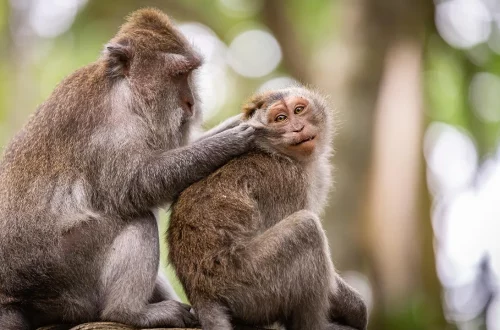
Understanding Dog Anal Knot: Causes, Symptoms, and Treatment Options
Understanding the health and well-being of our canine companions is essential for every responsible pet owner. Dogs, like humans, can experience a variety of health issues that may not always be apparent at first glance. One such concern is the presence of an anal knot, a condition that can cause discomfort and distress in dogs. This issue, while often overlooked, can significantly impact a dog’s quality of life if not addressed promptly.
An anal knot refers to a condition where the anal glands become impacted or infected, leading to swelling and the formation of a knot-like structure around the anus. This situation can arise from various factors, including poor diet, lack of exercise, or underlying health issues. Understanding the signs and symptoms of this condition is vital so that dog owners can take appropriate action when necessary.
Awareness of the causes and treatment options available is equally important. Whether you’re a seasoned dog owner or a first-time pet parent, being informed about this condition can help you provide better care for your furry friend. The more you know, the better equipped you are to spot potential issues early, ensuring that your dog remains healthy and happy throughout their life.
Recognizing the Symptoms of Anal Knot in Dogs
Recognizing the symptoms of an anal knot is crucial for timely intervention. Dogs are often unable to communicate their discomfort, making it vital for owners to be vigilant.
Common symptoms include excessive licking or biting at the anal area. You may notice your dog trying to relieve irritation by scooting on the ground, which can be a clear sign that something is wrong. Additionally, if your dog appears to be in pain when sitting or shows signs of discomfort when you touch the area, these can be significant indicators.
Another symptom to watch for is changes in bowel movements. If your dog is straining to defecate or experiencing diarrhea, it may be due to the pressure caused by the anal knot. A foul odor can also emanate from the anal region, indicating that an infection may be present.
In some cases, dogs may exhibit behavioral changes, becoming more irritable or withdrawn due to the discomfort they are experiencing. Pay close attention to any unusual behaviors, as these can provide important clues about your dog’s health.
Regular grooming and hygiene can help prevent the development of an anal knot. Maintaining a clean and healthy environment for your dog will reduce the likelihood of issues arising. If you notice any of the symptoms mentioned, it’s essential to consult with a veterinarian. Early diagnosis and treatment can lead to a better outcome and alleviate your dog’s discomfort.
Causes Behind Anal Knots in Dogs
Understanding the causes of anal knots in dogs can help in preventing this condition from developing. One of the primary reasons for anal gland issues is a poor diet. Dogs that consume low-quality food may have stools that are too soft, which can prevent the anal glands from being expressed naturally. On the other hand, a diet high in fiber can promote healthy bowel movements and assist in the natural expression of the glands.
Another contributing factor can be a lack of exercise. Regular physical activity helps stimulate the digestive system, promoting healthy bowel function. Dogs that lead a sedentary lifestyle may experience difficulties that can lead to anal gland problems.
In addition to diet and exercise, certain breeds may be more prone to anal gland issues. For example, small dog breeds like Chihuahuas and Dachshunds often experience problems due to their unique anatomy. Furthermore, underlying health conditions such as obesity or allergies can exacerbate the likelihood of developing anal knots.
Environmental factors can also play a role. Dogs that are frequently exposed to stress or changes in their surroundings may experience gastrointestinal issues, which can contribute to anal gland problems. Regular veterinary check-ups can help identify any underlying health concerns early on, allowing for proactive measures to be taken.
In summary, the causes of anal knots are multifaceted, involving dietary habits, exercise levels, breed predispositions, and environmental influences. By addressing these factors, dog owners can significantly reduce the risk of their pets developing this uncomfortable condition.
Treatment Options for Dogs with Anal Knots
When it comes to treating anal knots, the first step is a visit to the veterinarian. A professional assessment is crucial in determining the severity of the issue and the appropriate treatment plan. Depending on the diagnosis, treatment options may vary.
One common approach is the manual expression of the anal glands by a veterinarian. This procedure involves the vet gently squeezing the glands to release any built-up fluid, alleviating discomfort and addressing the immediate problem. In some cases, medication may be prescribed to manage any infection or inflammation associated with the anal knot.
If the condition is recurrent, dietary changes may be recommended. Switching to a high-fiber diet can help ensure that stools remain firm, promoting natural anal gland expression. Additionally, supplements such as pumpkin or dietary fiber can be beneficial in maintaining regular bowel movements.
In more severe cases, surgical intervention may be necessary. If the anal glands are chronically impacted or infected, a veterinarian may recommend surgical removal as a long-term solution. This procedure, although more invasive, can provide relief for dogs that suffer from frequent anal gland issues.
Preventative care is also an essential part of treatment. Regular grooming, including anal gland expression, can help prevent future problems. Maintaining a healthy diet and ensuring your dog gets plenty of exercise will also contribute to overall anal health.
Overall, treatment options for anal knots in dogs should be tailored to the individual pet’s needs. Regular veterinary visits and open communication with your vet will ensure the best care for your furry friend.
This article is intended for informational purposes only and should not be considered medical advice. Always consult a veterinarian for any health concerns regarding your pet.




